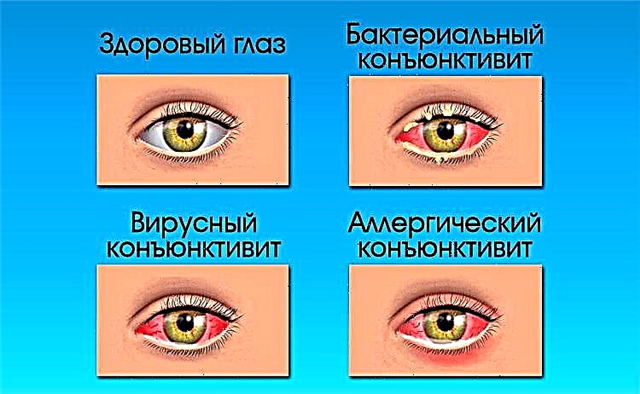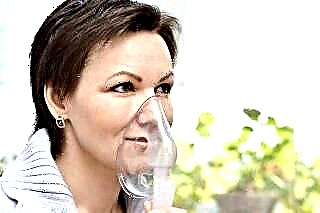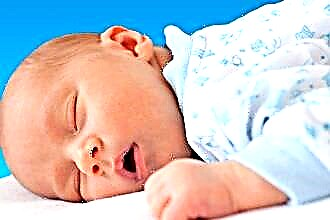The child's body is daily attacked by pathogens, but not all of them are accompanied by the development of the disease. The body's resistance is due to strong immune defenses, the maintenance of which is the task of the parents. The immune structures include lymphoid formations called tonsils. In the area of the oropharynx, they form a protective ring. Acute adenoiditis in children is associated with inflammation of the hypertrophied pharyngeal tonsil.
 Most often, children of preschool age suffer from the disease. At the age of 10, the lymphoid tissue begins to scleroze, so pathology is much less common. Adenoiditis can occur in a chronic form, but the clinical picture is especially pronounced in the case of an acute course.
Most often, children of preschool age suffer from the disease. At the age of 10, the lymphoid tissue begins to scleroze, so pathology is much less common. Adenoiditis can occur in a chronic form, but the clinical picture is especially pronounced in the case of an acute course.
The disease is similar to angina, so it is not always possible to suspect adenoiditis by the initial symptoms. Frequent acute inflammations lead to disruption of the course of immunological reactions, persistence of infection in the tissue, which leads to chronicity of the pathological process.
Parents whose children suffer from acute adenoiditis more than 3-4 times a year should not be surprised if they end up being offered surgery. An infection in the amygdala can provoke the development of a purulent type of inflammation, which is fraught with serious complications.
The disease can occur in different forms, depending on the health of the child, the state of his immunity and genetic predisposition to allergies. An acute process can proceed as a catarrhal, serous or purulent inflammation. Given the options for the course of pathology, distinguish between superficial and lacunar views.
What provokes acute adenoiditis in a child
The enlargement of the amygdala occurs due to the proliferation of lymphoid tissue. Hypertrophic processes can develop for the following reasons:
- hypersensitivity of the immune system to various allergens (this applies to children who are "poured" from chocolate, citrus fruits, after contact with animal hair). Also, the disease is more susceptible to children suffering from asthma or nasal polyposis;
- frequent colds and other respiratory diseases, such as SARS or flu;
- artificial feeding. It's no secret that breast milk provides a solid foundation for building a baby's immunity. With milk, children receive immunoglobulins, antibodies to protect against germs, and enzymes help in the digestion of food;
- an improper diet with a predominant carbohydrate content leads to impaired digestive function and dysbiosis. An imbalance of beneficial and pathogenic microorganisms in the intestines leads to a decrease in immune defenses and indigestion. Due to insufficient intake of protein food, the construction of immune components does not occur, since proteins are the building material in the body. Many children suffer from adenoiditis due to lack of vitamins and minerals. To normalize the nutritious diet, sweets will have to limit themselves in pleasure and try to eat healthy and wholesome food (dairy products, fish, meat);
- the presence of chronic infectious foci. This applies to children who are diagnosed with tonsillitis, pharyngitis or sinusitis with frequent exacerbations;
- transferred systemic diseases, for example, rickets, or concomitant autoimmune pathologies (lupus, scleroderma, vasculitis);
- diathesis, the cause of which is a violation of immune responses.
 An unfavorable environment also predisposes the development of many diseases in children - this is why pediatricians so often recommend a child's rest at sea. Climate change has a beneficial effect on the body, normalizing the immune system.
An unfavorable environment also predisposes the development of many diseases in children - this is why pediatricians so often recommend a child's rest at sea. Climate change has a beneficial effect on the body, normalizing the immune system.
Acute adenoiditis begins to manifest itself two days later after general hypothermia or severe stress. Often, parents notice that tonsil inflammation develops when a child has a cold. Due to a temporary decrease in the immune defense, pathogenic microbes are activated and begin to multiply, which leads to the appearance of clinical symptoms.
Quite rarely, a child has symptoms of exclusively adenoiditis. There is an inflammation of the mucous membrane of the entire nasopharynx and pharynx, so children have a cough, sore throat and nasal discharge, indicating an exacerbation of tracheitis, sinusitis or tonsillitis.
Acute adenoiditis can also be caused by primary infection with pneumococcus, streptococcus, or staphylococcus.
Overcoming a chronic infection is difficult - germs accumulate in folds or gaps, waiting for the right moment. Usually, an exacerbation is observed after being in the cold, a draft, or communicating with children with colds.
The first manifestations and main symptoms in children
At the initial stage, adenoiditis in a child is manifested by a change in the general condition. Parents notice that the child becomes less active, is naughty, refuses to eat and tries to go to bed. Already at this stage, parents should suspect something was wrong.
 The first step is to measure the temperature. The appearance of subfebrile condition indicates the development of an infectious disease. Even without knowing what disease the child has, it is necessary to increase the drinking regimen.
The first step is to measure the temperature. The appearance of subfebrile condition indicates the development of an infectious disease. Even without knowing what disease the child has, it is necessary to increase the drinking regimen.
Teas with raspberries, currants, honey, fruit drinks and compotes are perfect for this (depending on what the child likes).
Given the state of immunity and the pathogenicity of microbes, symptoms can be added every 3-5 hours. Clinically acute adenoiditis is manifested by:
- lethargy, apathy;
- febrile hyperthermia;
- restless sleep. The child sleeps for 50-90 minutes, turns in bed, so parents should also forget about sound sleep;
- headaches;
- nasal congestion, which causes children to breathe through the mouth, dryness of the oral mucosa and increased sore throat. As a result, the child refuses to eat even more;
- nasal discharge in the form of mucus. When purulent discharge appears, a green-yellow tint of mucus appears;
- snoring in a dream;
- cough, vomiting, which are provoked by the accumulation of mucus due to its flow down the posterior pharyngeal wall;
- voice hoarseness;
- hearing loss. This symptom appears due to the swelling of the mucous membrane of the auditory tube and a decrease in its patency;
- sore throat, ear area and nose area. When swallowing, the sore throat increases and there is a popping in the ear;
- an increase in the lymph nodes of the submandibular location.
If treatment begins at an early stage, adenoiditis proceeds in a catarrhal form, the symptoms of which are not so pronounced in comparison with the purulent process. Within a week, the child may already be absolutely healthy, which cannot be said about purulent adenoiditis.
In children, hearing loss develops much faster against the background of adenoiditis, which is associated with a narrower Eustachian tube. In turn, a violation of the ventilation function of the auditory tube leads to the development of otitis media.
| Features | Catarrhal form | Purulent form |
|---|---|---|
| Start | During the day | Less than a day |
| Hyperthermia | Subfebrile condition | Hectic fever |
| Fever course | After the temperature rises for 2-3 days, a gradual decrease in hyperthermia follows. | Undulating current |
| Discharge from the nose | Slimy character, light discharge, odorless | Mucopurulent discharge with a yellow-green tint and an unpleasant odor |
| Intoxication (weakness, loss of appetite, physical activity) | Less pronounced | More pronounced |
| Pain in the nasopharynx | Less pronounced | More pronounced |
Recovery with a purulent form occurs after 2-3 weeks from the onset of the first symptoms.
If acute adenoiditis develops in infants, a cough often appears, and asthma attacks develop with greater frequency. The child refuses to breast, the parents notice moodiness, anxiety, poor sleep, regurgitation and stool disturbances.
Treatment activities
 The task of parents in treating a child is to see a doctor early and follow his recommendations. The doctor, based on the results of the diagnosis, establishes the severity of the disease and suggests which drugs will be most effective in this case.
The task of parents in treating a child is to see a doctor early and follow his recommendations. The doctor, based on the results of the diagnosis, establishes the severity of the disease and suggests which drugs will be most effective in this case.
Usually, treatment is carried out at home, hospitalization is carried out with a complicated course of pathology. The therapy is based on the appointment:
- antibacterial agents to fight pathogenic microbes. For children, Augmentin, Sumamed is allowed;
- antihistamines that inhibit the development of an allergic reaction and reduce tissue swelling (Loratadin, Claritin);
- nasal sprays (Aqua Maris, Humer) - allow you to cleanse, moisturize the mucous membrane, reduce the intensity of edema, inflammation and eliminate microbes. For this purpose, it is allowed to rinse the nasal cavities with a decoction of herbs (chamomile, calendula, oak bark);
- solutions and sprays for rinsing and irrigation of the mucous throat. The irrigation bottle has an elongated tip, which is necessary to deliver the drug directly to the pathological focus. Sprays are especially often prescribed for young children, since they cannot gargle. For this, sprays Orasept, Aqua Maris, Bioparox or Tantum Verde are used. For rinsing, a solution of Miramistin, Chlorophyllipt or Rotokan is suitable;
- nasal vasoconstrictor agents (Vibrocil, Lazorin), due to which the swelling of the nasopharyngeal mucosa is reduced and nasal breathing is restored;
- nasal drying sprays (Protargol);
- homeopathic remedies (Lymphomyosot, Sinupret);
Physiotherapy treatments such as laser, electrophoresis, or phototherapy may be prescribed by your doctor if needed. It is also advisable to massage the pharyngeal tonsil (in the absence of purulent inflammation).
Note that laser action has a beneficial effect on lymphoid tissue, reducing its hyperplasia and inflammation. Laser therapy sessions can eliminate the need to take pills and prevent surgery altogether.
After the child recovers, parents need to understand that even the slightest hypothermia can lead to acute adenoiditis, so you need to pay special attention to the child's immunity. During the year, it is necessary to send children to the sea for 2-3 weeks. Several times a year it is advisable to take a course of taking immunostimulants, antihistamines and vitamin preparations. From folk remedies, Kalanchoe juice and propolis have proven their effect.



